Welcome to my favorite homemade banana ketchup recipe. This delicious Filipino condiment completely changed how I think about ketchup. Sweet, tangy, and with a depth of flavor you simply can't find in store-bought versions, this banana ketchup has become a staple in my kitchen.
I first tried making it after learning about its fascinating history as a wartime creation, and now I can't imagine going back to regular tomato ketchup for many dishes. While it does require some advance preparation (freezing bananas and making annatto oil), the actual hands-on cooking time is minimal, and the results are absolutely worth it.
The rich, complex flavor elevates everything from fried foods to grilled meats, bringing a unique Filipino twist to your table.
What is Banana Ketchup?
Banana ketchup is a Filipino condiment invented by food scientist and chemist Maria Orosa during the 1940s as a response to wartime food shortages. Unlike traditional tomato ketchup, this version uses puréed bananas as its base, seasoned with salt, sugar, garlic, onions, and spices. The result is a sweet, tangy sauce that has become a staple in Filipino households worldwide.
Originally created as a practical solution during WWII when tomatoes were scarce, banana ketchup has evolved into a beloved cultural icon. Maria Orosa's ingenuity transformed necessity into culinary innovation, creating a condiment that highlights the Philippines' abundant banana crops while delivering a unique and delicious flavor profile.
Jump to:
Why You'll Love This Recipe
- Authentic taste with the perfect balance of sweet, savory, and tangy flavors
- Homemade goodness without artificial preservatives or excess sugar
- Versatile condiment that pairs beautifully with Filipino classics and everyday favorites
- Rich history - you're recreating a beloved Filipino staple invented during WWII
- Customizable spice level - make it mild or add heat to suit your preference
Ingredients
I carefully selected these ingredients to create the perfect balance of flavors in this banana ketchup. Ripe bananas provide natural sweetness and body, while the annatto oil adds a beautiful color and subtle earthy notes.
Garlic and onions create a savory base, and tomato paste bridges the gap between traditional ketchup and this banana version. The combination of vinegar, soy sauce, and spices brings tanginess and depth, while corn syrup adds just enough sweetness and glossy texture.
Each component plays an essential role, the paprika and optional food coloring give it that classic red appearance, while the optional red pepper flakes let you customize the heat level to your preference.
Together, these ingredients create a complex, harmonious condiment that honors the Filipino original while being accessible to make at home.
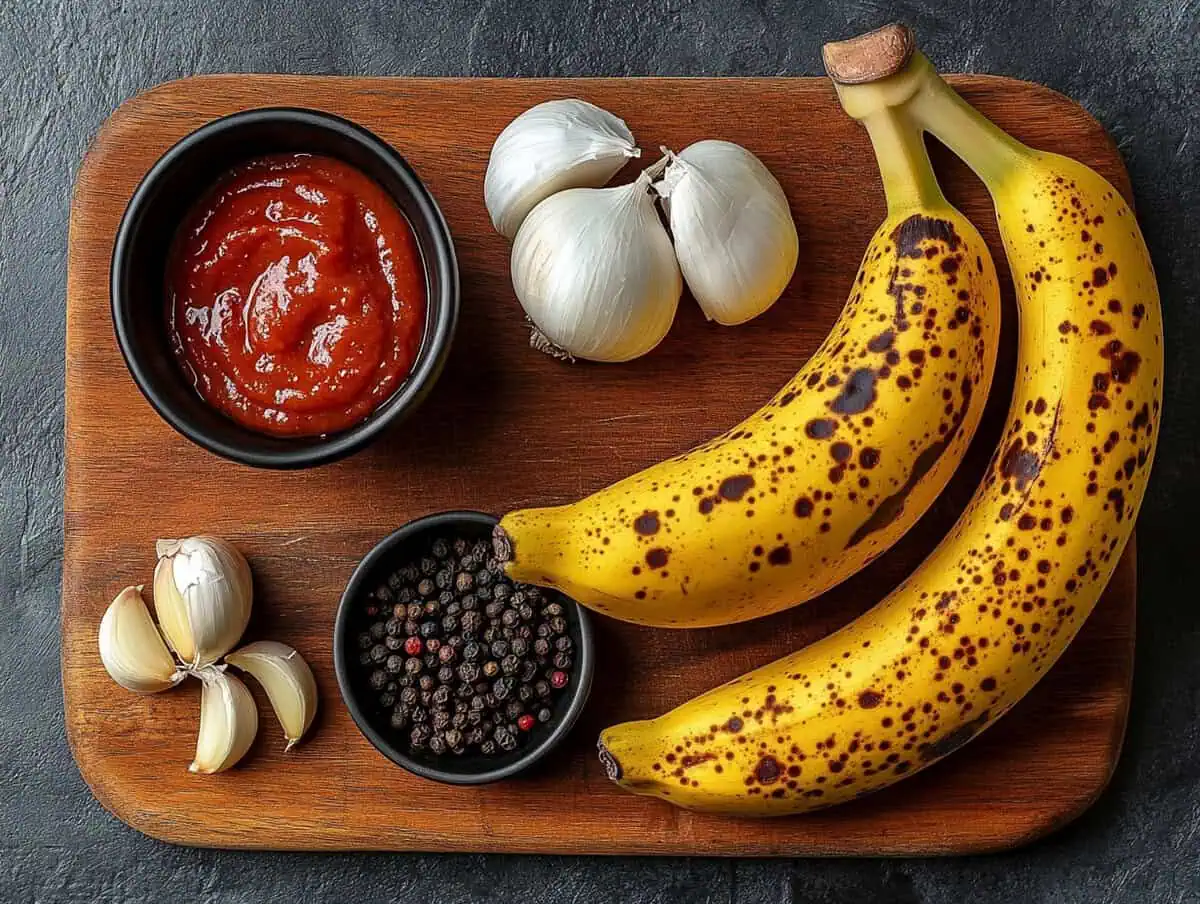
For the annatto oil:
- 1 ½ cups vegetable oil
- 2 tablespoons annatto (achuete) seeds
- 2 cloves garlic, minced
- 1 teaspoon black peppercorns
For the banana ketchup:
- 5 large fully ripe bananas
- 2 tablespoons annatto oil
- 2 cloves garlic, minced
- 1 medium white or yellow onion, chopped
- 2 tablespoons tomato paste
- 1 tablespoon white distilled vinegar
- 2 cups water
- 2 tablespoons light corn syrup
- 1 tablespoon soy sauce (Filipino or Chinese variety)
- 1 teaspoon sweet paprika
- 1 teaspoon salt
- 1 teaspoon freshly ground black pepper
- 1 teaspoon red pepper flakes (optional, for spicy version)
- ¼ cup sugar
- 2-3 drops red food color (optional)
Equipment
- Medium saucepan
- Small strainer
- Food processor or immersion blender
- Mason jars for storage
- Potato masher or fork
- Measuring cups and spoons
- Wooden spoon for stirring
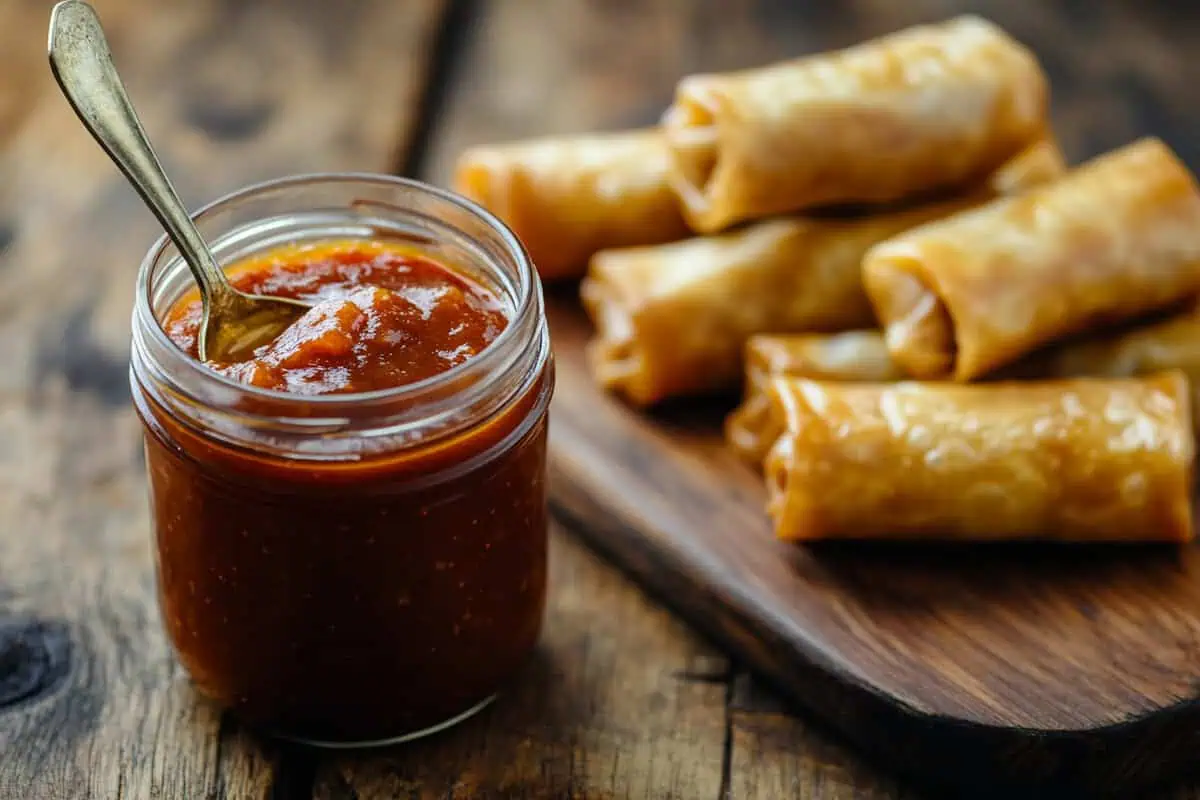
How To Make
Day 1: Prepare the annatto oil and freeze the bananas
- Make the annatto oil: In a small saucepan over medium heat, combine oil, annatto seeds, garlic, and peppercorns. Bring to a boil, then lower heat and simmer for 3 minutes. Watch carefully to prevent garlic from burning.
- Steep the oil: Remove from heat and let steep until room temperature, about 1 hour. Strain and discard solids. Store in a clean mason jar and refrigerate overnight.
- Freeze the bananas: Peel bananas and place in an airtight container. Freeze overnight.
Day 2: Make the banana ketchup
- Thaw the bananas: Remove from freezer and thaw completely, 1-2 hours.
- Mash the bananas: Once fully thawed, thoroughly mash until they form a thick pulp.
- Sauté aromatics: Heat 2 tablespoons annatto oil in a medium saucepan over medium heat. Add garlic and onion and sauté until translucent, about 2 minutes. Add tomato paste and fry for 2 minutes.
- Combine ingredients: Add mashed bananas and vinegar, combining well. Add water, corn syrup, soy sauce, paprika, salt, pepper, and red pepper flakes (if using).
- Simmer: Cook on low heat until the vinegary scent fades, 6-8 minutes. The ketchup should coat a spoon similar to store-bought ketchup.
- Finish and cool: Add sugar and food coloring (if using) and mix well. Turn off heat and allow to cool completely.
- Blend: Use an immersion blender or food processor to blend until smooth.
- Store: Transfer to clean mason jars and refrigerate for 2-3 days before using to allow flavors to develop.

Tips from Lola's Kitchen
- Ripeness matters: Use very ripe Cavendish bananas for the best flavor and natural sweetness.
- Freezing trick: Freezing bananas before use halts the ripening process, preserving your desired sweetness level.
- Color options: Traditional banana ketchup has a reddish color. While annatto oil and paprika provide natural coloring, you can add a few drops of red food coloring for that classic vibrant hue.
- Flavor development: Like many homemade condiments, banana ketchup tastes best after resting in the refrigerator for a few days, allowing the flavors to meld and develop complexity.
- Extra annatto oil: This recipe makes more annatto oil than needed for the ketchup. Save the remainder as a flavorful addition to marinades and other Filipino dishes.
Substitutions
- Bananas: While Cavendish bananas are most accessible, Latundan or Lacatan varieties can be used if available for more authentic Filipino flavor.
- Sweeteners: Brown sugar can replace white sugar for a deeper molasses flavor. Honey or maple syrup can substitute for corn syrup.
- Annatto seeds: If you can't find annatto seeds, use 1 teaspoon of paprika plus ¼ teaspoon turmeric for each tablespoon of annatto seeds to achieve a similar color.
- Soy sauce: Tamari is a good gluten-free alternative to traditional soy sauce.
- Heat level: Adjust the spiciness by varying the amount of red pepper flakes or substituting with fresh chilies or hot sauce.
Troubleshooting
- Too thick: If your ketchup is too thick, add water 1 tablespoon at a time until desired consistency is reached.
- Too thin: Simmer longer to reduce and thicken. The ketchup will also thicken slightly as it cools.
- Too sweet: Balance with an additional ½ teaspoon of vinegar.
- Too acidic: Add 1 teaspoon more sugar to balance the flavor.
- Grainy texture: This indicates insufficient blending. Return to the food processor for a longer blending session.
Storage & Reheating
- Refrigeration: Store in airtight containers in the refrigerator for up to 3 weeks.
- Freezing: Freeze in small portions for up to 1 month. Thaw completely in the refrigerator before using.
- Serving: Serve at room temperature for the best flavor profile. Remove from the refrigerator 15-20 minutes before serving.
- Quality check: If you notice any off odors, mold, or discoloration, discard immediately.
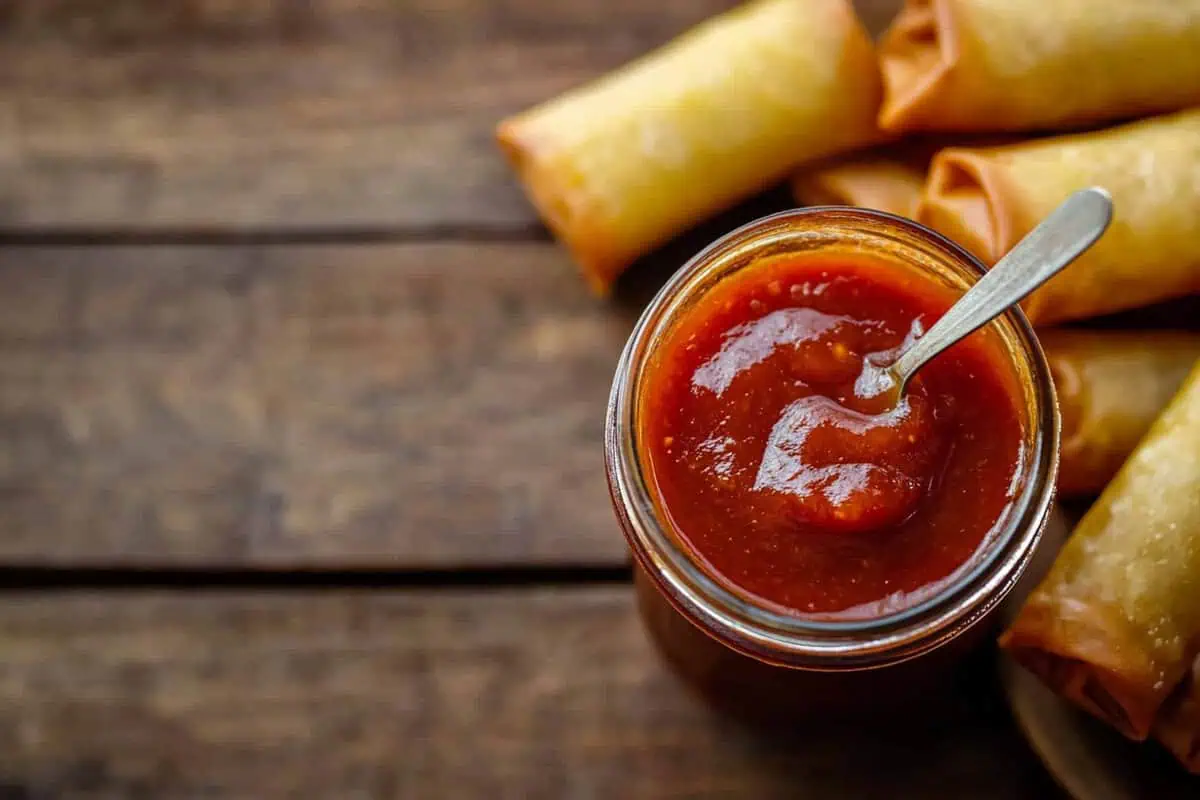
FAQ
What does banana ketchup taste like?
Banana ketchup has a sweet, tangy flavor similar to tomato ketchup but with subtle fruity notes. The spices and seasonings create a complex taste that's uniquely Filipino.
What can I serve with banana ketchup?
Banana ketchup pairs wonderfully with Filipino dishes like lumpia (egg rolls), fried chicken, giniling (ground meat hash), embutido (pork roll), and arroz a la Cubana. It's also excellent as a marinade for grilled meats or mixed into sweet spaghetti sauce.
Is banana ketchup vegan?
Yes, this recipe is completely vegan as it contains no animal products.
Can I make banana ketchup without food coloring?
Absolutely! The annatto oil and paprika provide natural reddish coloring. Traditional homemade versions often skip the artificial coloring.
Why freeze the bananas first?
Freezing bananas halts the ripening process, ensuring consistent sweetness and flavor. It also makes the bananas easier to mash to a smooth consistency.
How is this different from store-bought banana ketchup?
Homemade banana ketchup has a fresher flavor with less preservatives and artificial ingredients. You can also customize the sweetness and spice level to your preference.
Can I water bath can this recipe for longer storage?
This recipe hasn't been tested for water bath canning safety. For long-term storage, freezing is recommended.
Do I have to wait 2-3 days before using it?
While you can use it immediately, allowing the ketchup to rest in the refrigerator for a few days allows the flavors to develop fully, resulting in a more complex and balanced taste.
Related
Looking for other recipes like this? Try these:
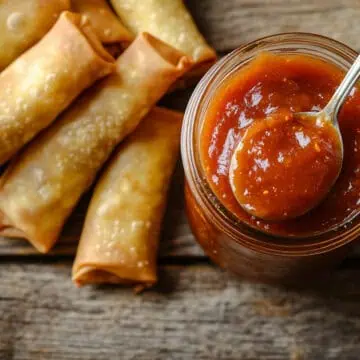
Homemade Banana Ketchup Recipe
Ingredients
For the annatto oil:
- 1 ½ cups vegetable oil
- 2 tablespoons annatto achuete seeds
- 2 cloves garlic minced
- 1 teaspoon black peppercorns
For the banana ketchup:
- 5 large fully ripe bananas
- 2 tablespoons annatto oil
- 2 cloves garlic minced
- 1 medium white or yellow onion chopped
- 2 tablespoons tomato paste
- 1 tablespoon white distilled vinegar
- 2 cups water
- 2 tablespoons light corn syrup
- 1 tablespoon soy sauce Filipino or Chinese variety
- 1 teaspoon sweet paprika
- 1 teaspoon salt
- 1 teaspoon freshly ground black pepper
- 1 teaspoon red pepper flakes optional, for spicy version
- ¼ cup sugar
- 2-3 drops red food color optional
Instructions
Day 1: Prepare the annatto oil and freeze the bananas
- Make the annatto oil: In a small saucepan over medium heat, combine oil, annatto seeds, garlic, and peppercorns. Bring to a boil, then lower heat and simmer for 3 minutes. Watch carefully to prevent garlic from burning.
- Steep the oil: Remove from heat and let steep until room temperature, about 1 hour. Strain and discard solids. Store in a clean mason jar and refrigerate overnight.
- Freeze the bananas: Peel bananas and place in an airtight container. Freeze overnight.
Day 2: Make the banana ketchup
- Thaw the bananas: Remove from freezer and thaw completely, 1-2 hours.
- Mash the bananas: Once fully thawed, thoroughly mash until they form a thick pulp.
- Sauté aromatics: Heat 2 tablespoons annatto oil in a medium saucepan over medium heat. Add garlic and onion and sauté until translucent, about 2 minutes. Add tomato paste and fry for 2 minutes.
- Combine ingredients: Add mashed bananas and vinegar, combining well. Add water, corn syrup, soy sauce, paprika, salt, pepper, and red pepper flakes (if using).
- Simmer: Cook on low heat until the vinegary scent fades, 6-8 minutes. The ketchup should coat a spoon similar to store-bought ketchup.
- Finish and cool: Add sugar and food coloring (if using) and mix well. Turn off heat and allow to cool completely.
- Blend: Use an immersion blender or food processor to blend until smooth.
- Store: Transfer to clean mason jars and refrigerate for 2-3 days before using to allow flavors to develop.
Tips from Lola's Kitchen
- Ripeness matters: Use very ripe Cavendish bananas for the best flavor and natural sweetness.
- Freezing trick: Freezing bananas before use halts the ripening process, preserving your desired sweetness level.
- Color options: Traditional banana ketchup has a reddish color. While annatto oil and paprika provide natural coloring, you can add a few drops of red food coloring for that classic vibrant hue.
- Flavor development: Like many homemade condiments, banana ketchup tastes best after resting in the refrigerator for a few days, allowing the flavors to meld and develop complexity.
- Extra annatto oil: This recipe makes more annatto oil than needed for the ketchup. Save the remainder as a flavorful addition to marinades and other Filipino dishes.
The Story Behind Banana Ketchup
Banana ketchup stands as a remarkable testament to Filipino ingenuity during challenging times. This beloved condiment was born out of necessity during World War II, when tomatoes became scarce in the Philippines. Maria Orosa, a brilliant food scientist and chemist, revolutionized Filipino cuisine by creating this alternative to tomato ketchup using the country's abundant banana crops.
In the early 1940s, as war disrupted food supplies across the Philippines, Orosa's innovation proved crucial for maintaining food security. Working as a division head at the Bureau of Plant Industry, she developed preservation techniques for various fruits, with banana ketchup becoming her most enduring creation. What began as a wartime substitute quickly became a cultural phenomenon, with Filipinos embracing the sweet-tangy condiment as part of their culinary identity.
The genius of banana ketchup lies in its perfect adaptation to Filipino taste preferences. The natural sweetness of ripe bananas complemented the Filipino palate, which generally favors the harmonious balance of sweet, sour, and savory flavors. Traditional Filipino cooking often incorporates fruit elements into savory dishes, making banana ketchup a natural extension of these culinary principles.
Commercial production of banana ketchup began shortly after the war, with brands like UFC and Jufran becoming household names across the Philippines. The addition of red food coloring became standard practice, allowing the condiment to visually resemble tomato ketchup while maintaining its distinctive flavor profile. Today, banana ketchup can be found in Filipino homes worldwide, serving as both a practical condiment and a symbol of cultural heritage.
The versatility of banana ketchup has contributed significantly to its enduring popularity. Beyond being a simple dipping sauce, it serves as a key ingredient in Filipino sweet spaghetti, a marinade for grilled meats, and a flavor enhancer for various traditional dishes. This adaptability has cemented its place in Filipino cuisine across generations.
Making banana ketchup at home connects you to this rich culinary history. Each batch preserves Maria Orosa's legacy of innovation and resourcefulness. While commercial versions remain popular, homemade banana ketchup offers deeper flavors and a meaningful connection to Filipino food traditions. This recipe honors the spirit of adaptation and creativity that has defined Filipino cooking throughout generations, transforming simple ingredients into something truly extraordinary.
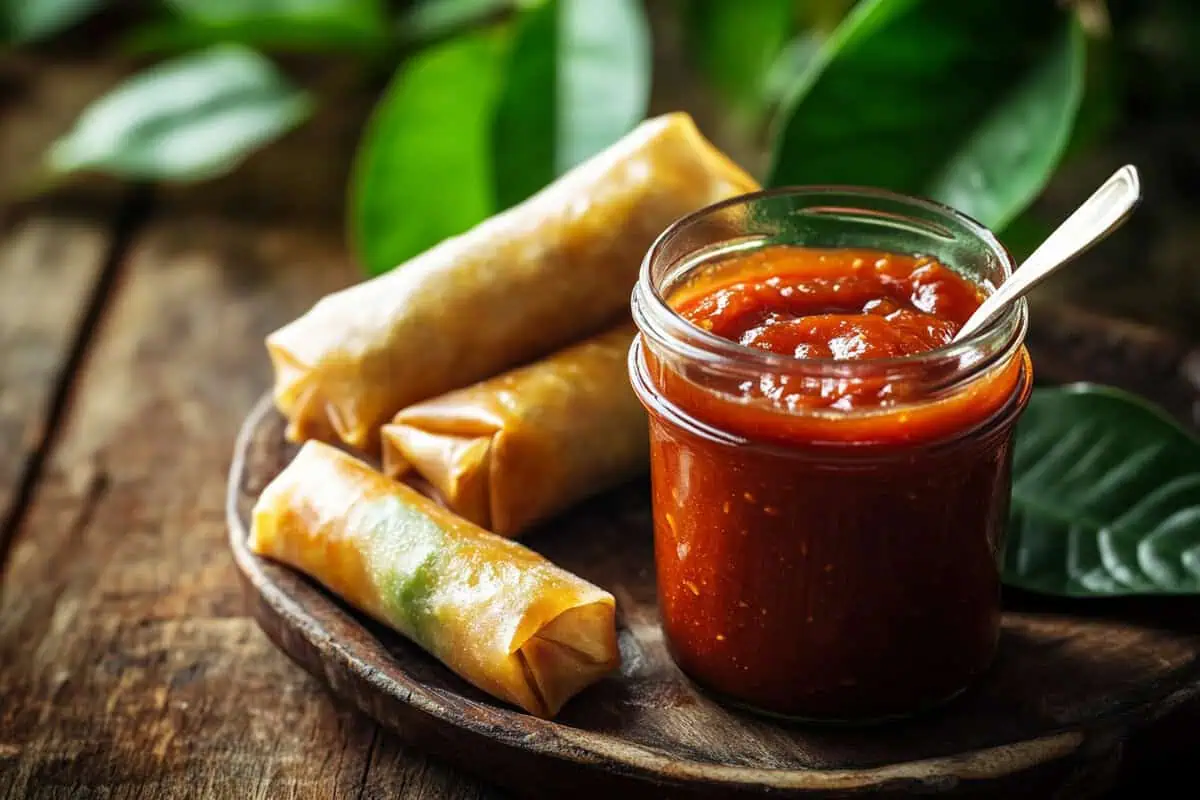





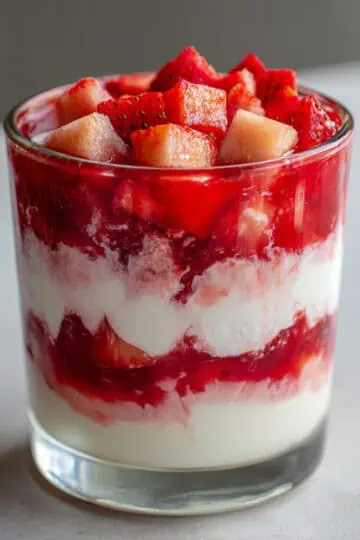
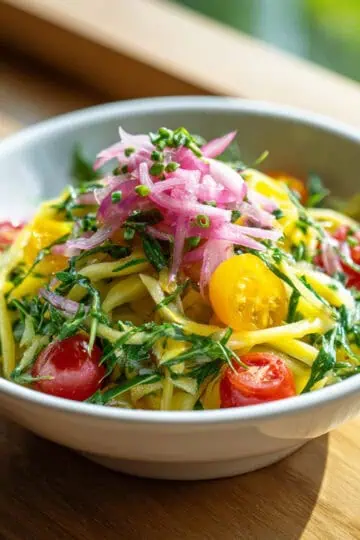
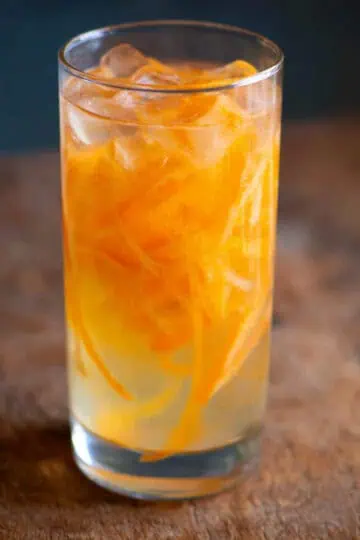
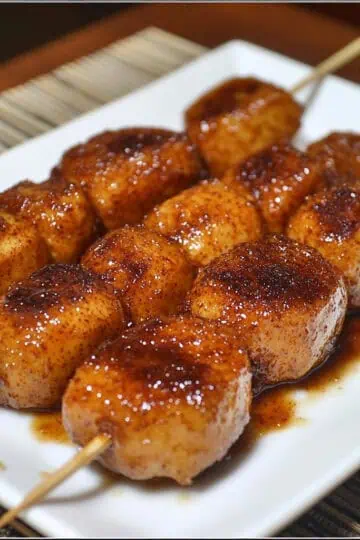
Comments
No Comments